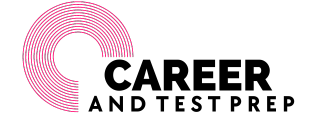Crafting a compelling resume is an essential step towards landing your dream job. Your resume is the first impression you make on potential employers, and it needs to showcase your skills and experience in a way that sets you apart from other applicants. A well-crafted resume can help you stand out in a crowded job market and increase your chances of getting an interview.
Writing a compelling resume requires a combination of strategy and creativity. You need to know what information to include, how to format it, and how to present it in a way that highlights your strengths. This article will provide you with tips and tricks to help you craft a winning resume that impresses potential employers. We’ll cover everything from choosing the right format to highlighting your skills and experience, and we’ll give you examples of successful resumes to inspire you.
Understanding the Basics
Crafting a resume that showcases your skills and experience to impress potential employers is an essential step in landing your dream job. Before you start writing, it’s important to understand the basics of resume types and formats.
Resume Types
There are three main types of resumes: chronological, functional, and combination.
- Chronological resumes are the most common type and are organized by work experience in reverse chronological order. They are best for those with a consistent work history and a clear career path.
- Functional resumes focus on skills and accomplishments rather than work history. They are best for those with gaps in their work history, those transitioning careers, or those with limited work experience.
- Combination resumes combine elements of both chronological and functional resumes. They are best for those with a diverse skill set and a mix of work experience and accomplishments.
Resume Formats
Once you’ve decided on a resume type, it’s important to choose a format that highlights your strengths and makes your resume easy to read.
- Reverse chronological format is the most common and presents your work experience in reverse chronological order.
- Functional format emphasizes your skills and accomplishments rather than work history.
- Combination format combines elements of both reverse chronological and functional formats.
When choosing a format, consider the job you’re applying for and what will best showcase your skills and experience. Keep in mind that your resume should be easy to read and visually appealing.
By understanding the basics of resume types and formats, you can create a compelling resume that highlights your strengths and catches the attention of potential employers.
Content and Structure

Crafting a compelling resume that showcases your skills and experience to impress potential employers requires careful consideration of both the content and structure. In this section, we’ll break down the key components of a strong resume and provide tips for how to structure each section effectively.
Contact Information
Your contact information should be prominently displayed at the top of your resume, including your full name, phone number, email address, and optionally, your address. Make sure your email address is professional and easy to read, and that your phone number is up-to-date and has a voicemail box set up in case you miss a call.
Professional Summary
Your professional summary should be a brief, attention-grabbing statement that summarizes your experience and highlights your key skills and accomplishments. Keep it concise and focused on the specific job you’re applying for, and avoid making exaggerated or false claims.
Work Experience
Your work experience section should list your previous jobs in reverse chronological order, starting with your most recent position. For each job, include your job title, the name of the company, the dates you worked there, and a brief description of your responsibilities and accomplishments. Use bullet points to make this section easy to skim and focus on quantifiable achievements whenever possible.
Education
Your education section should list your degrees and any relevant coursework or certifications. Include the name of the institution you attended, the degree you earned, and the dates you attended. If you’re a recent graduate or have limited work experience, you can also include relevant coursework or academic achievements.
Skills
Your skills section should highlight your key skills and abilities that are relevant to the job you’re applying for. Use bullet points to make this section easy to read and focus on specific skills that are mentioned in the job listing. Avoid generic or overused phrases like “team player” or “strong communicator.”
Additional Sections
Depending on your experience and the job you’re applying for, you may also want to include additional sections such as volunteer experience, professional affiliations, or language proficiency. These sections can help round out your resume and provide additional context for your skills and experience.
By following these guidelines and structuring your resume effectively, you can create a compelling document that showcases your qualifications and impresses potential employers.
Customizing Your Resume

Crafting a resume that showcases your skills and experience to impress potential employers is essential. However, it is equally important to tailor your resume to the specific job you are applying for. Customizing your resume can increase your chances of getting hired by highlighting the most relevant qualifications and achievements.
Tailoring to Job Descriptions
One effective way to customize your resume is to tailor it to the job description. Start by carefully reading the job posting and highlighting the key skills and requirements. Then, adjust your resume to highlight your relevant experience and accomplishments that match those requirements.
For example, if the job posting emphasizes strong communication skills, make sure to highlight your experience in that area. You might include a bullet point that says “Led weekly team meetings and delivered presentations to clients, resulting in a 25% increase in customer satisfaction.”
Using Keywords
Another way to customize your resume is to use keywords. Many companies use applicant tracking systems (ATS) to screen resumes before they even reach a human recruiter. These systems scan resumes for specific keywords and phrases that match the job description.
To increase your chances of passing the ATS screening, make sure to include relevant keywords throughout your resume. For example, if the job posting mentions “project management” as a requirement, make sure to include that phrase in your resume, such as “Successfully managed multiple projects, resulting in a 15% increase in efficiency.”
However, be careful not to overuse keywords or include irrelevant ones. This can make your resume appear spammy and decrease your chances of getting hired.
In conclusion, customizing your resume is an essential step in the job application process. By tailoring your resume to the job description and using relevant keywords, you can increase your chances of getting hired and showcase your skills and experience in the most effective way possible.
Final Touches
Now that you have crafted a resume that showcases your skills and experience to impress potential employers, it’s time to focus on the final touches. These final touches can make a significant impact on how your resume is received by hiring managers. Here are some important final touches you should consider:
Proofreading and Editing
Before submitting your resume, it’s essential to proofread and edit it thoroughly. A single typo or grammatical error can make a negative impression on hiring managers. Consider using a grammar checker or asking a friend to review your resume for errors.
Resume Design
The design of your resume can also make a significant impact on how it’s received. A well-designed resume can make it easier for hiring managers to read and understand your skills and experience. Consider using a clean and simple design with easy-to-read fonts and appropriate use of white space. You can also use tables or bullet points to make your resume more readable.
Cover Letter
In addition to your resume, you should also consider including a cover letter. A cover letter can provide additional context for your skills and experience and demonstrate your interest in the position. Make sure your cover letter is tailored to the specific job you’re applying for and highlights how your skills and experience align with the job requirements.
By focusing on these final touches, you can ensure that your resume is polished and effective in showcasing your skills and experience to potential employers.






